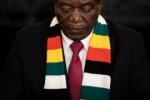Sub-Imperialisms in the Syrian Imbroglio
A significant and swift transformation is occurring in Syria. Anti-regime forces have quickly taken control of the capital, capturing all major cities in under two weeks. The speed at which the regime forces in Syria fell has astonished everyone. Understandably, analysts have primarily concentrated on the agencies involved in this rapid transformation and the potential consequences of regime change in Syria. Iran and Russia are identified as significant losers, while Israel and Turkey are seen as major winners. Yet, the situation on the ground is considerably more complex for two primary reasons.
First, the conjunctural factors driving rapid transformation and the varying degrees of success among certain agencies do not play a decisive role in determining enduring political outcomes. Instead, the structural and long-term trends shape these conjunctural circumstances and provide the context for agency interactions. Second, the question of whether Iran and Russia will emerge as long-term losers hinges on the outcome of intense diplomatic and potentially military conflicts, making any predictions at this stage both precarious and short-sighted. However, it can be argued, based on historical evidence, that Israeli and Turkish sub-imperialisms have been active in Syria and beyond for quite some time. By leveraging their strategic relationships with the United States and capitalising on its global and regional hegemonic crises, both Israel and Turkey have begun to fill the geopolitical voids that were once managed by the superpower.
Key agencies and the critical conjuncture
The leading rebel group involved in the events that transpired since early December 2024 is Hayat Tahrir al-Sham (HTS). Established initially as Jabhat al-Nusra at the onset of the Syrian civil war in 2011 as an affiliate of al-Qaeda, HTS has emerged as one of the most formidable and lethal forces opposing President Assad under the leadership of Abu Mohammed al-Jolani. While the United Nations, the United States, Turkey, and various other nations have designated HTS as a terrorist organisation, Turkey has notably been its primary supporter in Idlib, deploying approximately 15,000 troops and providing shelter to the jihadists against Syrian government forces. In return, al-Jolani has publicly distanced himself from al-Qaeda, dissolved Jabhat al-Nusra, and formed HTS through a merger with several other groups sharing a similar anti-Assad stance. The jihadist struggle against Assad’s regime has drawn radical Islamists from numerous countries, including Uyghurs from China, Albanians, Turks, Jordanians, Chechens, and others, all of whom have contributed their forces to the military efforts. Al-Jolani has promoted many of these individuals to high-ranking positions within his government and military hierarchy, asserting that he anticipates no free elections in the coming four years (Usher, 2024; Salame, 2024).
Among the groups that fought against the Assad regime in Syria is the Syrian National Army (SNA), which is openly supported and controlled by Turkey. Founded in 2017, the SNA consists of a diverse array of Arab and Turkmen factions and fighters. It serves as a key component of Turkish sub-imperialism in northern Syria, with its primary objective being the defeat of Kurdish groups. The strategic town of Manbij has fallen under the control of the SNA and Turkey, placing Rojava under serious threat, as the Kurds have appealed to the USA and Israel for a no-fly zone in the region.
Turkey’s primary goal is to prevent Kurdish groups from establishing a regional government on the Syrian side of its southern border. Additionally, Turkey aims to manage the area to facilitate the return of Syrian refugees from nearby Turkish towns and Gaziantep. The country is also engaged in demographic engineering; for instance, in the north-western region of Afrin, jihadist militias, backed by the Turkish army, have expelled Kurds from their towns and villages, resettling Arabs and Turkmen in their place. Turkey plans to resettle its over four million refugees in southern and south-eastern Turkey, as well as in northern Syria. As we will explore further, Turkish sub-imperialism has gained a significant degree of autonomy in its strategic interactions with the USA—something that Turkish policymakers and President Erdogan call “strategic autonomy.”
The Syrian Democratic Forces (SDF) are a Kurdish-dominated alliance that controls a vast swathe of territory in north-east Syria and is backed by the United States and Israel. Importantly, they control Syria’s primary oil resources in Deir Ezzor, as well as most of the country’s arable land. There is also the Southern Operations Room, a newly formed coalition of rebel groups in southern and south-eastern Syria, primarily composed of Druze communities and opposition groups. Finally, the Islamic State of Iraq and Syria (ISIS), despite being defeated by a coalition of forces earlier, has remained active, particularly in central Syria and is periodically targeted by American warplanes. Christian and other agencies, such as Syrian Alawites, lack military capabilities and cannot operate as organised entities opposing HTS and the SNA.
The surprising success of the anti-Assad forces and the nonchalant reactions of Russia and Iran are directly linked to Israel’s wars in Gaza and Lebanon, as well as the ongoing conflict in Ukraine between Russia and NATO. These wars have disrupted the fragile balance in the greater Middle East and have pulled at a thread that has begun to unravel the region’s geopolitical fabric. With Hezbollah significantly weakened, and given the Israeli attacks on Tehran, Iran became preoccupied with its defences against Israel rather than the fate of Assad’s regime and Hezbollah.........






















 Toi Staff
Toi Staff Tarik Cyril Amar
Tarik Cyril Amar Jeffrey Bernstein Ph.d
Jeffrey Bernstein Ph.d Sharona Margolin Halickman
Sharona Margolin Halickman Gideon Levy
Gideon Levy Maryam Aldossari
Maryam Aldossari Sabine Kinkartz
Sabine Kinkartz Andrew Mitrovica
Andrew Mitrovica Tafi Mhaka
Tafi Mhaka Jennifer Gerlach Lcsw
Jennifer Gerlach Lcsw Maximilian Hess
Maximilian Hess
